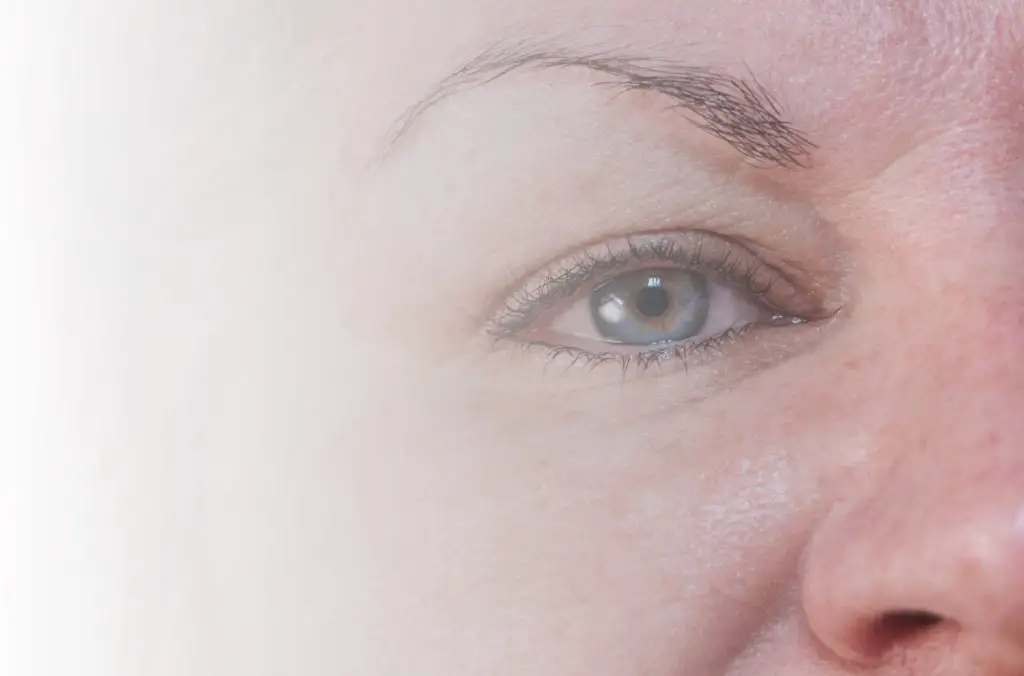
One of the realities of getting older for many women is that their eyebrows…disappear. Cosmetics bags now include a variety of pencils and powders used to simulate some form of former brow glory. Then microblading appeared as an alternative that looked like it held real promise. Last year, when we first ran this article, we asked our readers whether they would try microblading to replace their fading eyebrows. More than half (53%) said yes. Many others (43%) were not sure. Only 4% gave a definite “no”.
If you are intrigued by the idea of having perfectly formed, permanent (or semi-permanent) eyebrows again, read on to see if microblading is for you.
Over-plucked, thinning, or fading eyebrows are typical for women in our age group. One permanent brow solution that is getting a lot of attention these days is microblading.
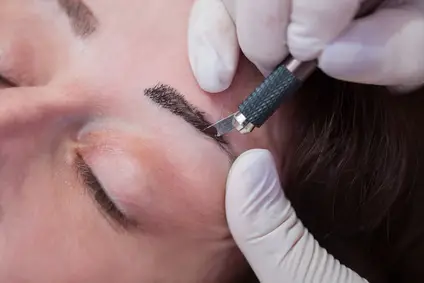
Microblading is a technique performed with an X-Acto knife-like pen that uses a fine blade to deposit pigments into the epidermis along the brow line. Because color is imparted close to the surface of the skin, the strokes appear crisp and very fine. The results are natural looking, hair-like strokes. Is microblading right for you? Let’s first look at the problem of disappearing brows and why they matter.
Brows make the face
Remember the skinny brow look in the late 70s and early 80s–and how enthusiastically you plucked your brows? Then Brooke Shields popularized the thick eyebrow, so we stopped plucking and waited for our brows to grow back. They didn’t. Even if you didn’t over-pluck your brows when you were younger, they most certainly have become thinner and more faded with age.
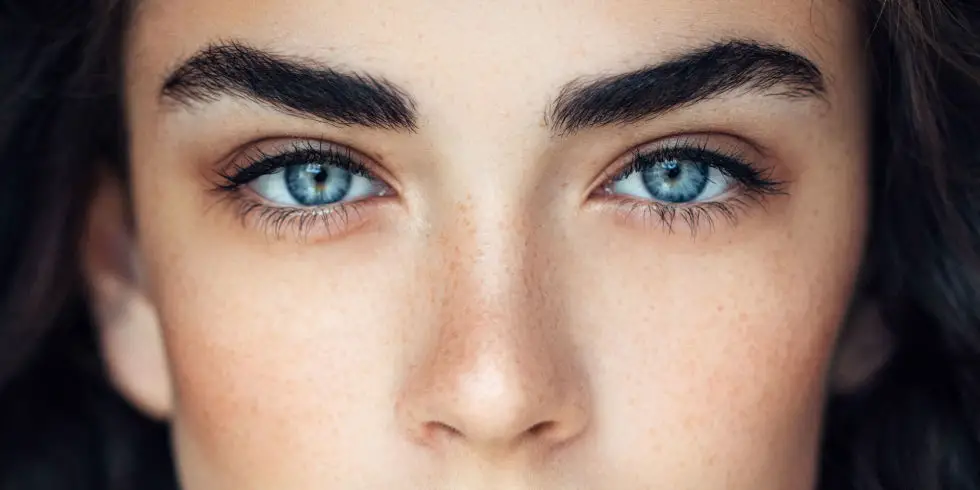
Remember the skinny brow look in the late 70s and early 80s–and how enthusiastically you plucked your brows? Then Brooke Shields popularized the thick eyebrow, so we stopped plucking and waited for our brows to grow back. They didn’t. Even if you didn’t over-pluck your brows when you were younger, they most certainly have become thinner and more faded with age. They may even have turned gray by now.
And here’s the problem: as you age, thin, faded brows make you look older and harsher. And as Anastasia Soare, Beverly Hills brow guru to the stars, observes “nothing frames a face so beautifully or gives an instantaneous lift quite like perfectly shaped brows.”
Eyebrows are crucial for facial identity.
In a study conducted by an MIT behavioral neuroscientist, test subjects were shown altered images of recognizable faces and asked them to identify the person in each photo. They were able to identify faces with 60 percent of the time. But when the eyebrows were missing in the photos, the participants’ abilities to recognize the faces dropped to 46 percent, proving that eyebrows are very important to your face and your overall appearance.
Why did this happen to my brows?
Hair, including eyebrow hair, has a three=phase growth cycle. There’s the anagen phase (active growing), the catagen phase (growth stops), and the telogen phase (the hair is at rest). Then the hair falls out, and a new one grows in its place.
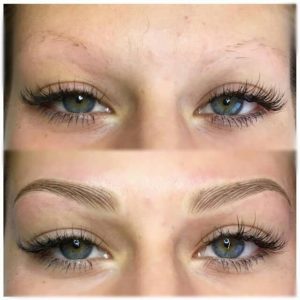 When a hair is plucked, the growth cycle is disrupted. Repeated plucking in a certain area can stunt the growth cycle, often permanently, particularly if it has been done this for years. In addition, hair growth slows as we age, so even those who have not over-plucked their eyebrows will very likely have eyebrows that are thinning or fading or getting patchy. Here’s, why: just like the hair on your head, your eyebrows often thin as you age. Thinning brows can also be attributed to hormonal issues, medical treatments, nutrient deficiencies, etc.
When a hair is plucked, the growth cycle is disrupted. Repeated plucking in a certain area can stunt the growth cycle, often permanently, particularly if it has been done this for years. In addition, hair growth slows as we age, so even those who have not over-plucked their eyebrows will very likely have eyebrows that are thinning or fading or getting patchy. Here’s, why: just like the hair on your head, your eyebrows often thin as you age. Thinning brows can also be attributed to hormonal issues, medical treatments, nutrient deficiencies, etc.
What to do about your brows
There are numerous cosmetic brow products on the market. They come in the form of pencils, powders, liquids, and waxes. Some of them last all day until you take them off. The advantages of brow products are that they are relatively inexpensive and application is pain free. The disadvantages are that they are time consuming (you are putting a new brow on every day), they can smudge and fade, particularly in warm weather, and swimming and sweating will generally eradicate your brow handiwork. And then there is microblading.
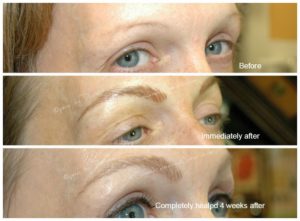
From Carolina Permanent CosmeticsWith microblading, color pigments are formulated to match the original eyebrow color, then placed stroke by . Initially, the brows appear darker, but fade over a two-week period. Touch ups are required within weeks of the initial treatment and then once a year. The results can last anywhere from 11 to 18 months. Microblading is not a new technique but it is very much in vogue now because it gives more natural results than the old style of tattooing. And when the color is carefully chosen, it won’t turn to blue-black over time, as happens with many old-style tattoos.
The pros and cons of microblading
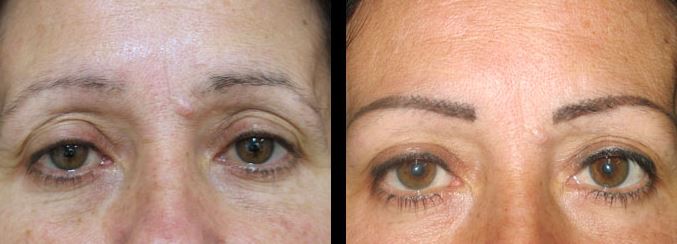
Microblading is considered permanent makeup. The big plus of microblading is the convenience, time-saving, and longevity. You do not have to put your brows on every day, perspiration will not budge them, and they will not streak or smudge like cosmetic eyebrows. However, there is a rub. The first one, of course, is that you need to do your due diligence carefully—very carefully. You must have absolute faith and trust in your microblade artist because you will have to live with the results. The other concern is price: the cost of two microbladed brows begins at around $500 and goes up from there; some places charge $1200 for two brows.
How to know if microblading is for you
We consulted Lindsey Ta, the founder of MicrobladingLA, in Woodland Hills, California, a world champion microblading artist, and an advocate for microblading around the world. In January 2016, Lindsey won first place at The World of Microblading Championship held in Amsterdam, where she competed against some of the best microblading artists in the world. There is an extensive FAQ section on MicrobladingLA’s website but we asked Lindsey a number of specific questions relevant to women in our age group.
Q: How will mature skin—which is typically dry and prone to wrinkles—affect the results of microblading?
Lindsey Ta: Mature skin will actually take the pigment better because the skin is drier, which is good for microblading. But since the skin takes the pigment so well, it’s possible to use too much pigment. Wrinkles in the brow area where we are creating shape may interfere with the work. But an experienced artist knows how to handle this.
Q: Obviously in our age group, medication is going to be more of an issue than it would be for younger women. How might medication influence the microblading procedure?
LT: In the Terms and Conditions section of our website, I discuss who is ineligible for microblading, including people with certain conditions and those taking certain medication. If a client is taking any medication, it’s very important for them to check with their doctor to ensure the local anesthetic or pigments the artist uses won’t have an adverse effect. For example, some anesthetics are not well suited for clients with high blood pressure. Blood thinners will make it harder for the artist to work, since they are cutting the skin.
Q: Speaking of cutting the skin, how painful is the procedure?
LT: I tell people it feels like scraping on the skin. Most people report no pain at all. However, mature skin is thinner and often more sensitive. We do use a topical anesthetic that numbs the skin.
Q: What’s the most important thing you would tell the older woman who is contemplating microblading?
LT: We have older women in our salon all the time and we have great results. The best thing you can do is look at the artist’s portfolio or Instagram to see if the artist has worked on skin similar to yours in age and tone and texture. These things all affect the work. Check their portfolio, ask to see healed work, and have fun shopping for new eyebrows!
Dominique Sachse, a two-time Emmy award-winning journalist and well-known Houston news anchor, is a prolific beauty blogger who documented her microblading experience from research to finished brows on video. Her video is well worth the ten minutes it takes to watch.
Video from YouTube
If you decide that microblading is for you, follow these simple steps:
- Do your research. Study “before” and “after” pictures done by the practitioner you have chosen. Read reviews. Interview your practitioner and make sure you like her attitude and approach. If you feel rushed or you don’t feel your questions are being answered satisfactorily, find someone else. Dominique Sachse is in front of the camera every day so she was painstaking in her research. You can’t afford a mistake either—your eyebrows are a focal point of your face.
- Insist on a consultation. If you try to tack a consultation onto appointment time, you will most likely feel rushed. This is a big step for you so take your time. Some practitioners charge for a consultation but deduct the fee from subsequent services. You need to have all your questions answered and you need time to go away and let the information settle. You also need time to change your mind if that is what you decide to do.
- Accept reality. If the practitioner you select after your thorough research advises that microblading is not for you, accept reality. Don’t go from practitioner to practitioner until you find someone who will do it. There are always those people who want the business and are not concerned with the results. Once you select someone whose opinion you value, take her advice. Microblading may not be for you.
[polldaddy poll=9750587]
* * *
Header photo from MicrobladingLA.com
More to read
 Ageless beauty: Secrets of French skin care
Ageless beauty: Secrets of French skin care
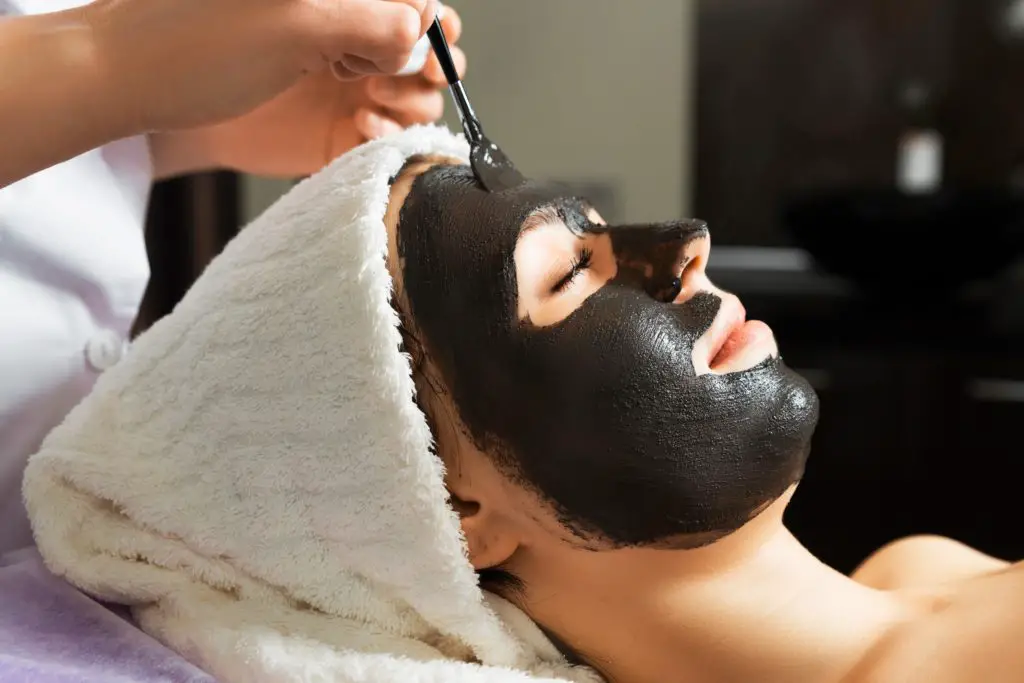
Over 60? Reclaim your cheekbones with contouring
